At what point does space become place? Questions relating to geography and identity are most often left to urban planners, ethnographers, and cultural theorists. Locality is defined as the social relationships produced by and through the built environment; in essence, a bringing together of cartography and sociology. There is disparity though between the permanence of municipal infrastructure—timeless architectural landmarks and preordained civic identity—and the evolving tangle of day-to-day lived social interactions. The context-specific experience of place is the research interest of choreographer Leyya Tawil and composer Lars J. Brouwer. Through their ongoing project, The Grand Re-Map, Tawil and Brouwer seek to observe, record, and reinterpret the perceptions, sounds, and physical interactions between body and landscape as a means to unpack locality and remap place.
Tawil and Brouwer’s journey through cities, neighborhoods, and even specific buildings captures the embodied experience of each location. They interweave sounds and gestures to create elaborately choreographed compositions that reveal the extraordinary character within mundane interactions. The two artists are urban travelers, surveying locations by foot, bike, bus, and car, to approach each site with the untarnished ears and eyes of vacation-happy tourists, even when the city has been frequented a number of times before. The Grand Re-Map proves that locality is necessarily an incomplete project, and much to the advantage of cities like Detroit, the project indicates that every place is ripe for remapping and reinvention. In effect, The Grand Re-Map transforms space into place, anchoring each location in time in order to cultivate narrative and meaning.
I spoke to Leyya Tawil in her Oakland, CA studio about The Grand Re-Map, Detroit.
Sarah Margolis-Pineo: I feel as though I should begin by making a small disclaimer: I am an unabashed enthusiast of alternative mapping practices. What interests me about The Grand Re-Map is the project’s hybridization of various traditional practices—cartography, ethnography, and flâneurie—to produce, (and re-produce), a geography rooted in experience and context. How did The Grand Re-Map originate, and why the interest in mapping as a creative practice?
Leyya Tawil: Same! I’ve always been drawn to maps and I’m really enjoying the contemporary mapping practices that seem to be exploding in variations. I think of maps as guides for organizing and understanding information. Sometimes that information is geographic space, other times embodied space, ideas, etc. As a creative practice, my concept of mapping has taken various forms that have led to The Grand Re-Map project. In 2010, I toured a solo work titled “Map of the World #1-6,” which was an identity-based work mapping facets of the world as I see it. By touring the work to four countries, my research was to notice how the embodiment/presentation/symbolism of the work shifted in cultural context. That led to a location-situation-based dance project called “Quieting Heart Series,” which was essentially a series of expressions determined by location, the artists at hand, and the ideas spurred in the moment. We created maps of our slice in time/space together: choreographies, improvisations, music, films, etc. That was how I began working with music designer Lars J. Brouwer, my cohort and lead collaborator for The Grand Re-Map. He had a take on location-based work that was rooted in sound, and also an approach to online/media practices that would become a huge element of the Grand Re-Map project. Our conversations led to a waterfall of ideas and inspirations.
Our central idea is to create an experiential map of each location we visit, with a consistent method of research and production, so that the maps can stack up and be comparable in archival form. Our maps are made of sounds, movement ideas, images, and spatial ideas all captured on location and then re-created through our performance frame. It’s a fast and furious process!
SMP: Where have you worked at this point in the project and how were the communities selected? Were your expectations of these sites different than your experience remapping?
LT: We just completed our initial development and pilot tour of the work. So far we have hit Amsterdam Noord, NYC Subway Lines 6 & L, Detroit from a Car, New Orleans Bywater, Oakland’s Arbor Café, and the ATL – the Atlanta Airport! So you can see that our “locations” are pretty specific, yet variable. Location in this project could be a city, a neighborhood, a ‘micro-location’ like a subway line or small business, etc. In all of the locations, Lars and I had to negotiate our insider/outsider status. This is an important aspect to the work, because we are capturing/creating a map so quickly (1-2 days), that we have to claim our “outsider” take on it, however having some insider familiarity with each city was vital in this initial run. We chose these cities and locations based on opportunity, and some in-road that would facilitate some aspect of the trial period. Our performance venues were also diverse: a theater, a gallery, a bar, a café…All part of the experimental process.
[vimeo:https://vimeo.com/38957583]
SMP: Can you go into a bit of detail and describe the process for The Grand Re-Map in Detroit?
LT: Detroit was really special. In some way because I’m from there, and in another way because it was always Lars’s dream to get there. So I wanted to show him everything! But how can we take it all in? A car, obviously. So in the one-day research time we allotted ourselves, Lars and I (with resident Jeremy Kallio), just joy rode from neighborhood to neighborhood, sharing stories and histories along the way. It was St. Patrick’s Day, and we hit Corktown, Greektown, Southwest, Belle Isle and ended with Bakers Lounge. Lars decided what sounds to sample, where and why. For my own research, I tried to see Detroit as it was that very day. Conversations played a big role in my read on it. I do have both insider/outsider status, so it was pretty layered for me as well. The live performance took place at Detroit Contemporary, an awesome venue directed by Aaron Timlin. Lars composed a score based entirely on collected sounds, and I performed movement both composed and improvised, which was determined by the prior day’s experience. Our guest artist was violinist Mike Khoury, playing viola that night in fact. At the end of the show, everyone was up and dancing (as we always hope will be the case). So it was a great premiere!
SMP: It seems that you have a range of collaborators who participate in single instances or as ongoing partners. Who are you working with on The Grand Re-Map and what do their varying levels of involvement contribute to the project?
LT: The main artists involved in the work are myself and Lars. At each location/live event we invite a local artist to collaborate and perform with us. This was part of the performance arc. We start with “the perimeter” (dance and sound samples in the raw), then spiral inward until Lars and I are improvising with a local “voice.” So far, all our guest artists have been musicians: in Oakland we were joined by guitarist Ava Mendoza, in New Orleans by composer/pianist Jeff Pagano. We imagine bringing on dancers, poets, and visual artists as well in the future. The final phase of the live show is to involve the whole audience in a “Re-Map Dance”—thus the performance is claimed by the people, if they want it!
In an ideal world, Lars and I would tour with a documentary video artist and a poet as well. We would love to add a literary voice to the maps, and also a thorough video capture of the process.
SMP: There are two concurrent iterations of this project: the research and performance, and the web-based platform. How do the two aspects of the project approach remapping differently, and how do the two support each other?
LT: The multiple iterations are quite symbiotic. Each body of research is summarized in the live event on location, but also parceled out as raw or edited material for online broadcast. The live event provides an embodied, time-based map of our findings, and the web-map is growing into an intricate, comparative archive. They contextualize one another and extend the life and reach of the work. I would say the live dance and music element of the work is really rich, and it allows the live audience to feel and actually move/participate in the mapping event. This is also really important–that the maps are born of the people onsite as well.
SMP: How will The Grand Re-Map continue?
LT: Lars and I will re-enter the development phase, analyze what worked on the pilot tour, and determine how to proceed. I imagine our research methods will become more acutely focused, and the web-platform will go through an evolution as well. We need to have a very tight methodology in order to clearly capture all the places we dream of mapping. A Grand Tour 2013 is in the works. We have European cities lined up, once funding allows, and we would also like to map locations in the Middle East and Asia. I’m also interested in visiting rural and suburban areas, and also to re-map already visited cities from different angles. So many possibilities! This project will live on for some time. We’ll be back to Detroit for sure!
Leyya Mona Tawil is a dance artist, educator, and the founder and artistic director of DANCE ELIXIR, an Oakland-based company that produces collaborative art in the form of live multidisciplinary productions, experimental films, and research-based projects. Leyya’s work has been presented in nine countries throughout Europe and the Arab World, and in seventeen cities in the United States. International highlights included performances at the Syrian National Opera House (Demascus), CESTA/Spektrum (Czech Republic), and Studio Emad Eddin (Cairo).
Lars J. Brouwer is an Amsterdam-based independent music designer specializing in music for motion and interaction. Notable projects include: developing and composing a piece for a unique sixty-speaker sound system commissioned by the fashion label NON by Kim during Amsterdam International Fashion Week 2010, and creating a composition exclusively from naval sounds that was presented to 400,000 visitors during the World Port Days in Rotterdam.
The Grand Re-Map’s Leyya Tawil & Lars J. Brouwer along with guest artist Megan Nicely will be performing at the Temescal Art Center in Oakland, CA, Friday and Saturday, May 25-26, 8:30pm.
**All photos in this post are courtesy of Steven Schreiber, Megan Nicely, and Lars J. Brouwer.

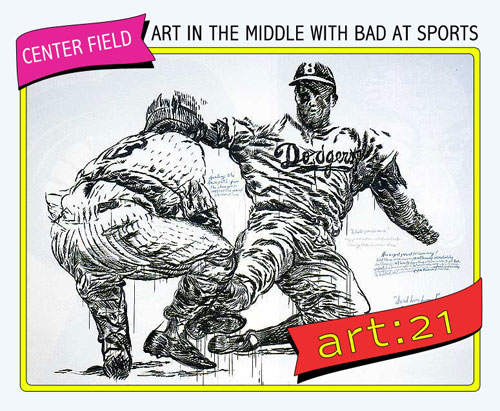

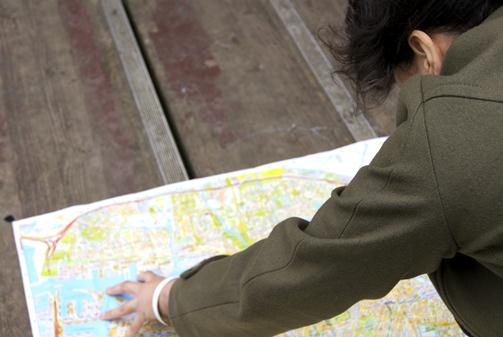
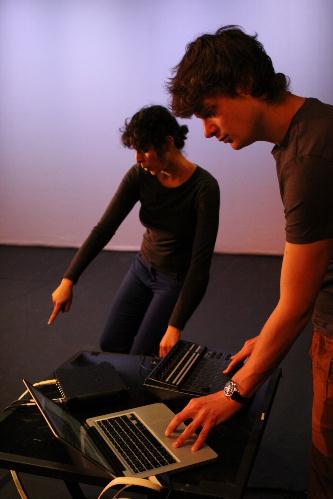
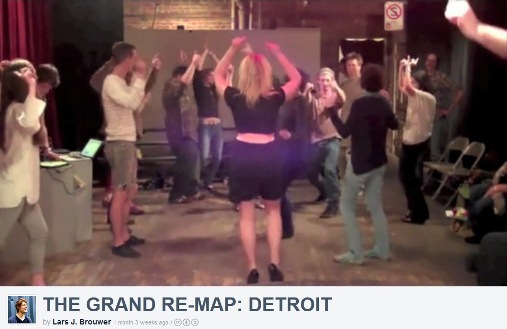
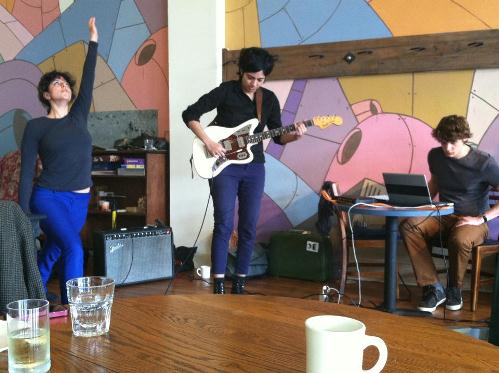
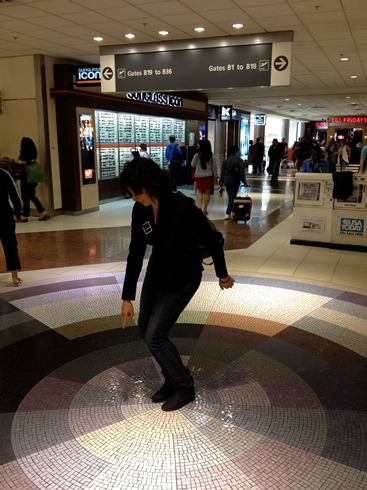
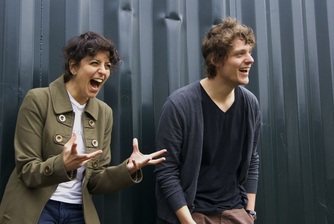




Pingback: art:21 Interview! « The Grand Re-Map
Pingback: May 4th TAWIL + Phillip Greenlief + Tiberius – GLArts 9:00 PM | Ma series
Pingback: Ma Series: May 6th GLArts 9:00 P.M. Leyya Tawil, Phillip Greenlief, Andrea Parkins, Tiberius | Amy Reed